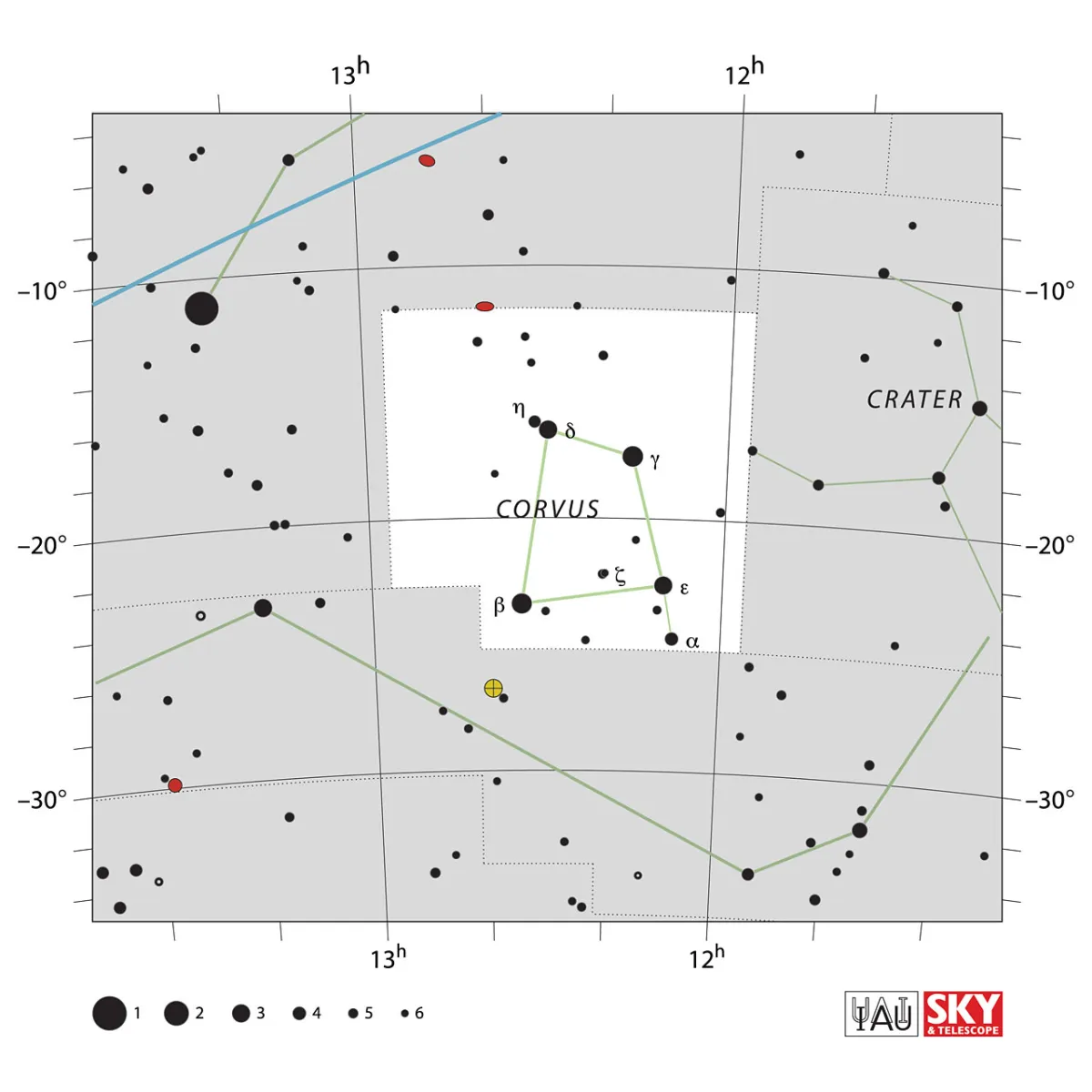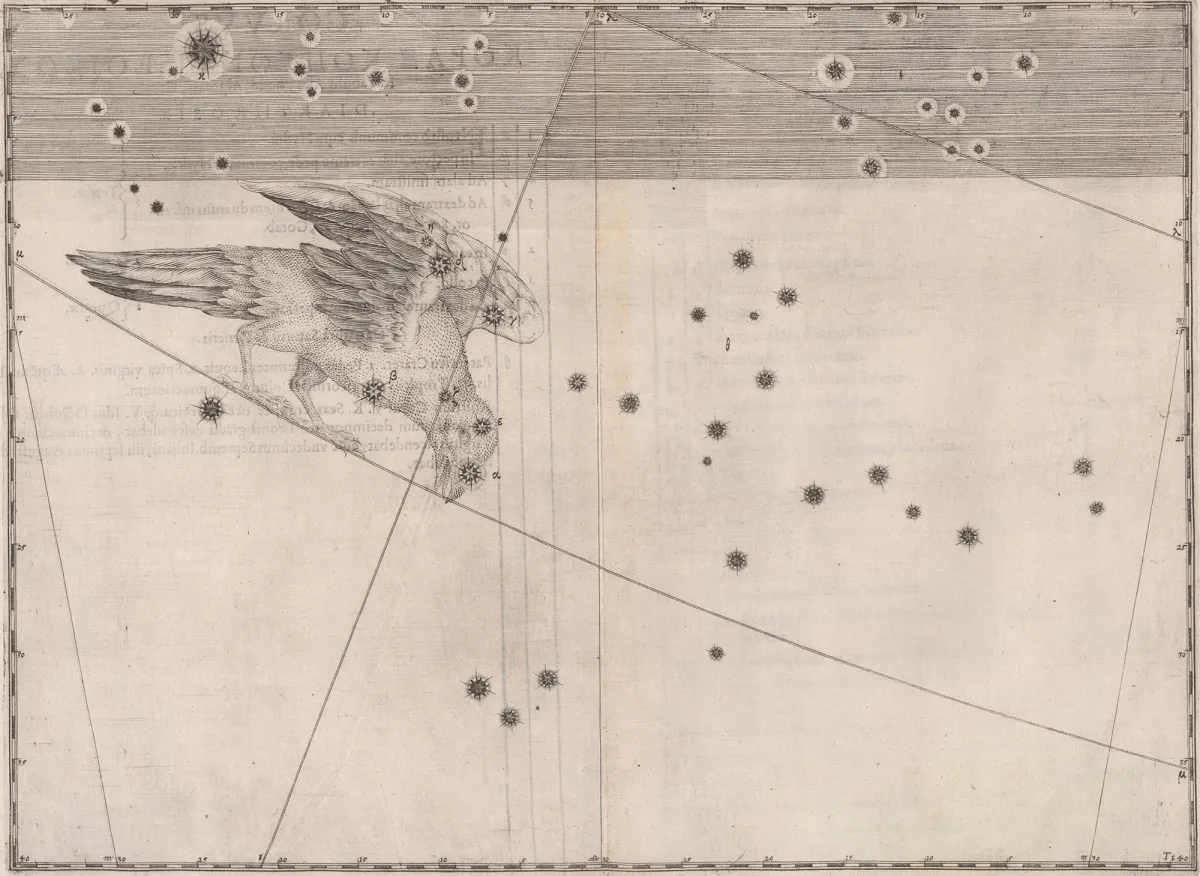Constellation Corvus (Crow)

Properties
The constellation Corvus is located southwest of the bright star Spica in Virgo. Although the stars are not particularly bright, they form a distinctive shape of a tall, rather rectangular trapezoid. The constellation occupies an area of 184 square degrees in the sky and its centre culminates around midnight on March 28th. [9, 15]
| α Crv | Alchiba, Alchita, Al Minliar Al Ghurab, Al Chiba |
| β Crv | Kraz |
| γ Crv | Gienah Ghurab, Gienah |
| δ Crv | Algorab, Algores, Algoral, Algorel |
| ε Crv | Minkar |
| IAU Name | Corvus |
| IAU Genitive | Corvi |
| IAU Abbr. | Crv |
| English Name | Crow |
| Culmination at local midnight | 28 March |
| Season (Latitude +0.0°) | December … September |
| Right Ascension (J2000.0) | 11h 56m 22s … 12h 56m 40s |
| Declination (J2000.0) | -25° 11' 45" … -11° 40' 39" |
| Area | 184 deg2 |
| Neighbours (N↻) | Vir, Crt, Hya |
Deep-Sky Object Descriptions
Catalogues

Mythology and History
The origin of this constellation can be traced back at least to the ancient Greeks. According to legend, Apollo sent the raven to fetch fresh spring water with a golden cup. Instead, however, the raven feasted on figs, and when he returned he carried the water snake in his clutches. He croaked outrageously that this would have prevented him from fulfilling his sacred duty. However, Apollo recognized the lie and banished all three to the sky, where Corvus and Crater (cup) lie on the back of the hydra (water snake). In addition, the raven was condemned to eternal thirst - an "attempt to explain" the croaking cries of these birds.
According to another legend, a white raven brought Apollo the news that Coronis, his lover, had been unfaithful to him. Apollon is said to have blackened the raven out of anger. In the Greek world of legends, Apollo was always closely associated with ravens, as he himself had turned into a raven in the conflict between the gods and the titans.
The Indians from the Rio Negro river basin in northern Brazil see a flying heron in the raven. [7, 20]